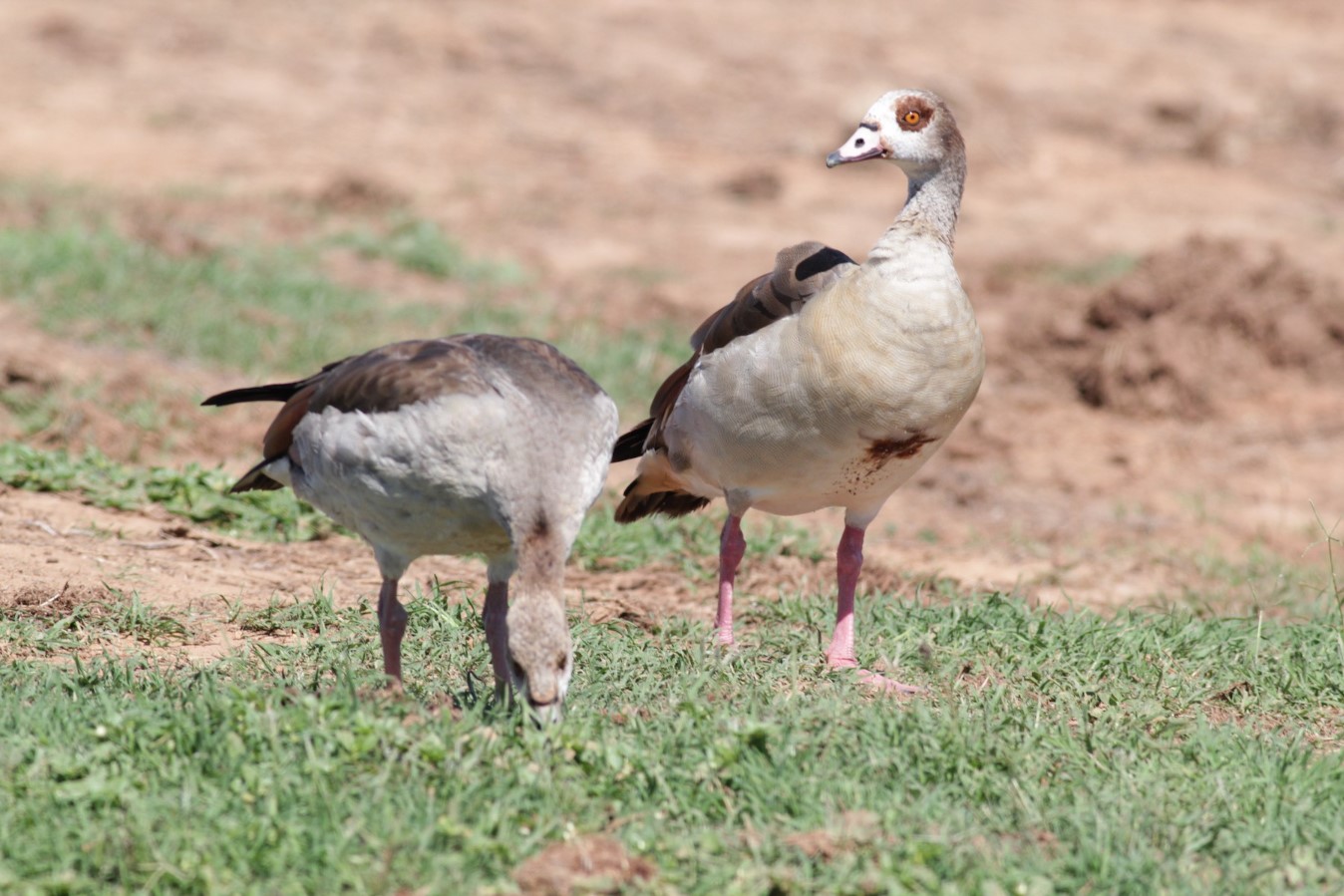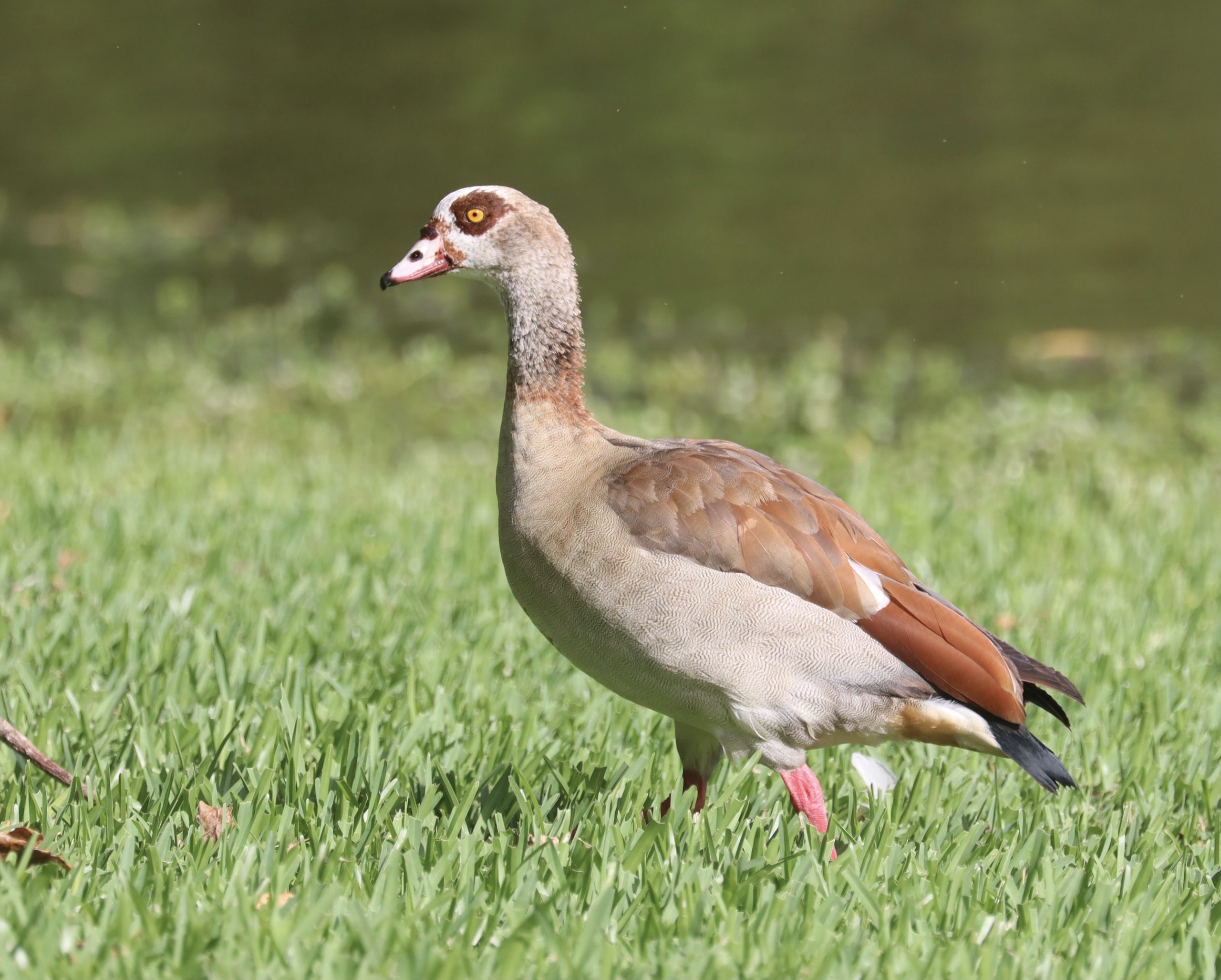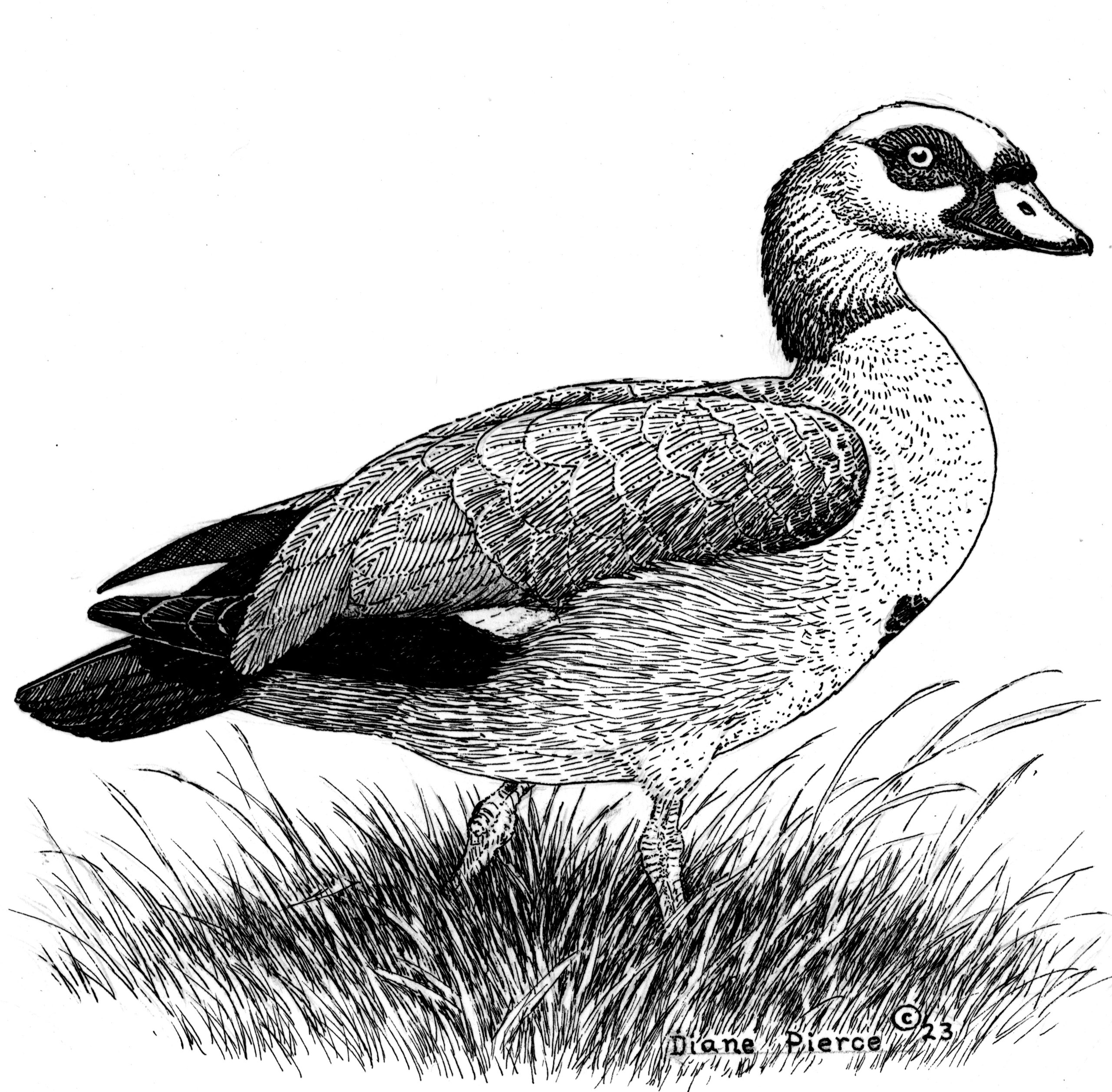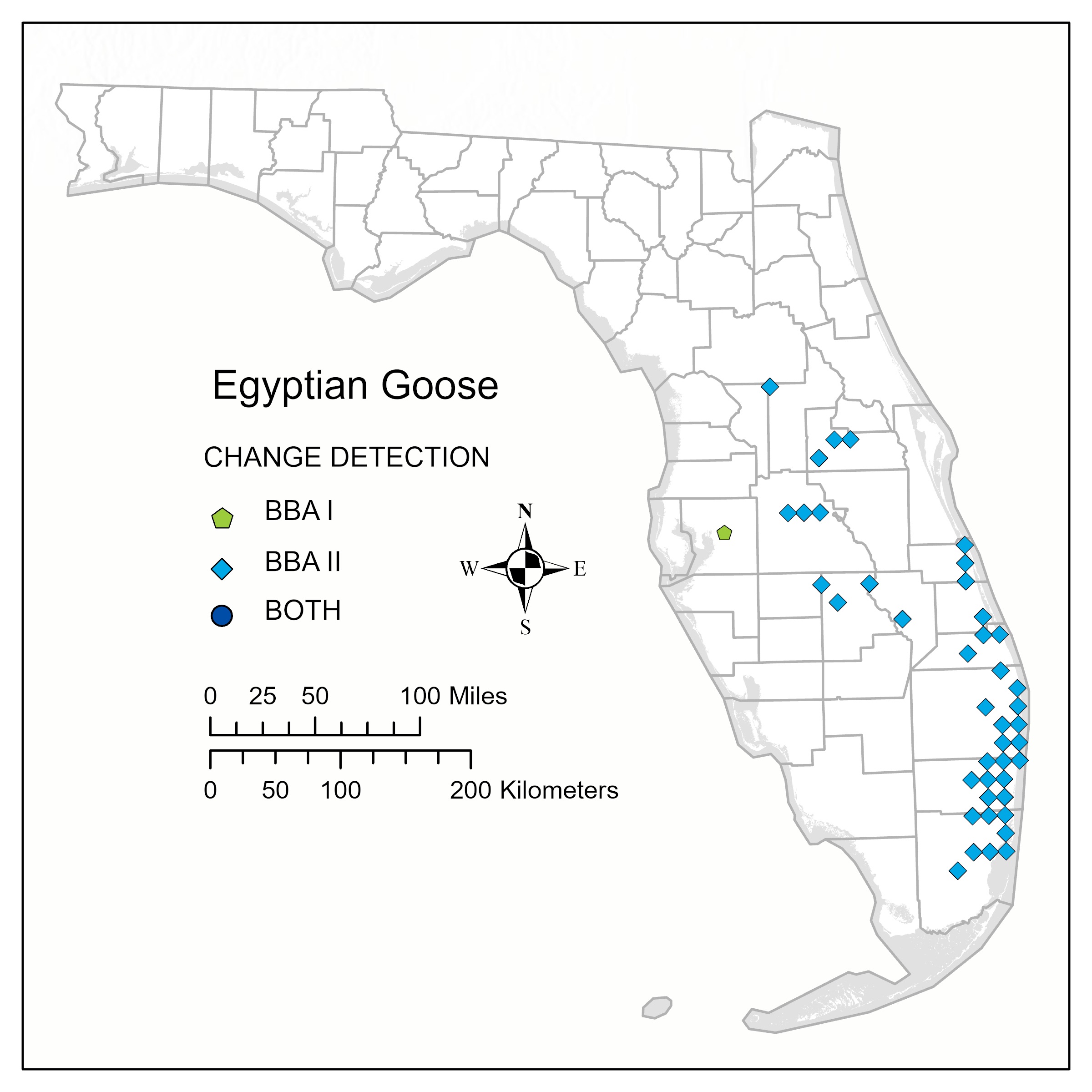Species Account
The Egyptian Goose is an aggressive species native to sub-Saharan Africa that has rapidly colonized southeastern Florida in the last 2 decades, likely as a result of escapees from aviculture (Pranty and Ponzo 2014, Callaghan and Brooks 2017). It was first documented as nesting in Martin County in 2002 (Braun 2004) and has since become established throughout the southeastern Atlantic coastal counties and a few other locations in central Florida.
Egyptian Geese occupy most wetland habitats in their native range, except for heavily forested areas (del Hoyo et al. 1992). In Florida, they occur almost entirely in human-created environments such as parks, residential areas, and golf courses that contain open grassy areas, scattered trees, and ponds or other wetlands (Pranty and Ponzo 2014). They feed by grazing in open areas for grass, seeds, stems, and other vegetable matter, and the occasional worms or insects (del Hoyo et al. 1992).
Egyptian Geese lay between 5 to 12 eggs in a ground nest (del Hoyo et al. 1992) and are known for being extremely aggressive in defense of their young (Pranty and Ponzo 2014; M. Davis, Tropical Audubon Society, personal observation). In Florida, egg clutches have been documented between 20 April and 27 December, and broods of young have been seen every month (Pranty and Ponzo 2014). Broods average 4.9 young/pair and it is likely that pairs in southeast Florida can raise 2 to 3 broods a year (Pranty and Ponzo 2014).
Updated Status
The Egyptian Goose has dramatically expanded its range between BBA I and BBA II (Figures 1 and 2). In BBA I, the species was detected only in Hillsborough County where it was considered a probable breeder. Comparatively, Egyptian Geese had become established across southern Florida by the time of the BBA II and were detected at 42 locations across 12 counties. Breeding was confirmed at 22 of these locations.
The highest density of Egyptian Geese is across the highly urbanized areas of southeast Florida, from Indian River County south to Miami-Dade County, although they have been reported in most urban areas across the peninsula (eBird 2021). Counts as high as 143 individuals have been reported at some artificial lakes in Miami-Dade County within recent years (eBird 2021). Egyptian Geese do not appear to have a strong foothold in either the Florida Keys or the Panhandle at this time, possibly due to their association with human-created landscapes. However, this species is extremely aggressive, prolific, and versatile, so its explosive spread across Florida should be expected to continue.
Breeding Bird Survey (BBS) estimated trends are not included for Egyptian Goose.

Data

Above Photo by Adam Kent
Table 1

Maps
Figure 1
Figure 1. Egyptian Goose quad-level distribution, Florida Breeding Bird Atlas II. Figures 1 and 2 are based on data collected across all six atlas blocks within a quad. Figure 1 is based on the highest breeding code observed in each quad.
References
Braun, G. D. 2004. First documented nesting in the wild of Egyptian geese in Florida. Florida Field Naturalist 32:138–143.
Callaghan, C. T., and D. M. Brooks. 2017. History, current distribution, and status of the Egyptian goose (Alopochen aegyptiaca) in the contiguous United States. The Southwestern Naturalist 62(4):296-300.
del Hoyo, J., A. Elliott, and J. Sargatal, editors. 1992. Handbook of the Birds of the World. Volume 1. Lynx Edicions, Barcelona, Spain.
eBird. 2021. eBird: An online database of bird distribution and abundance [web application]. eBird, Cornell Lab of Ornithology, Ithaca, New York. http://www.ebird.org. Accessed 8 June 2022.
Pranty, B., and V. Ponzo. 2014. Status and distribution of Egyptian geese (Alopochen aegyptiaca) in Southeastern Florida. Florida Field Naturalist 42:91–107.



